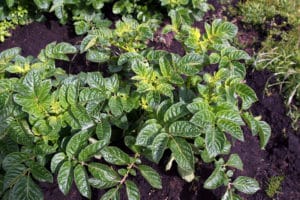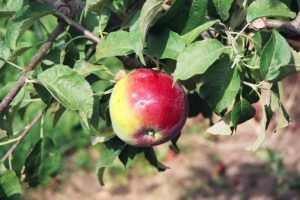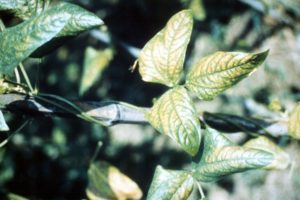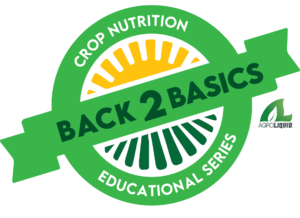Secondary nutrients, including sulfur, calcium, and magnesium, are critical to plant development. Secondary nutrient deficiencies prevent plants from utilizing primary nutrients to their fullest extent, which ultimately stunts growth. Secondary nutrient deficiencies can also cause problems in plants, such as misshapen or stunted fruit or tubers, yellowed leaves, or weak stalks, among other things.
Reach out to the AgroLiquid team for more information and to answer your questions on the damaging effects of secondary nutrient deficiencies.
Sulfur Deficiency
Sulfur is a secondary element crucial to healthy crop development. It is found in amino acids that make up plant proteins. Sulfur fertilization has also been shown to increase the seed oil content of crops such as soybeans and flax. Plant and animal scientists have shown that plant tissue should contain one part sulfur for every 15 to 20 parts nitrogen for optimum growth and production of high-quality animal feeds.
How sulfur deficiency looks
Symptoms of sulfur deficiency will appear on the younger leaves of a crop taking on a light green or yellow color. It also causes slowed growth and delayed maturity. A sulfur deficiency can look similar to a nitrogen deficiency so it is important to identify where on the plant the yellowing starts.
Affect on yield
Sulfur aids in seed production and promotes nodule formation in legumes. In addition, sulfur helps to develop vitamins and enzymes. A lack of sulfur results in small, slow-growing plants. In most fruits, it is a major component of flavor. Sulfur is most readily available in soils with a pH of 6.0 or greater.
AgroLiquid sulfur-containing products
eNhance™, accesS™, Kalibrate™, High NRG-N™, FertiRain™, FASE1™, Micro 600
 Calcium Deficiency
Calcium Deficiency
Calcium is a secondary plant nutrient. It is required for the formation of new cells and is present in cell walls and membranes. Calcium stimulates root and leaf development and helps to reduce nitrate-N within plants. Calcium is needed to activate several plant enzymes and is required by nitrogen-fixing bacteria.
How calcium deficiencies look
A calcium deficiency will start by affecting the growing points of the plant resulting in new growth that looks stunted or withered; tip burn is also common. Because of the role calcium plays in fruit development, a deficiency will appear as the premature shedding of blossoms and buds as well as water-soaked and discolored areas on fruits.
Affect on yield
In the soil, calcium indirectly influences yield by reducing soil acidity — lowering solubility and toxicity of manganese, copper, and aluminum. It also indirectly helps by improving root growth conditions, molybdenum availability, and uptake of other nutrients. In the plant, it improves fruit quality by strengthening cell walls, reducing bruising in shipping, and increasing storage life. Calcium is most readily available in soils with a pH of 7.0 – 8.5.
AgroLiquid calcium-containing products
Magnesium Deficiency
Magnesium is a secondary plant nutrient. It serves as an activator of many plant enzymes required in growth. It’s the central atom in chlorophyll. It also aids in phosphate and nitrogen metabolism. Magnesium is necessary for the formation of oils, fats, amino acids, and sugars, and it promotes early growth and uniform crop maturity.
How magnesium deficiency looks
The most common representation of a magnesium nutrient deficiency is when the lower, older leaves look chlorotic between their leaf veins, where the leaf becomes pale while the leaf veins remain green. If left untreated, growth will become stunted and parts of your plant may suffer from necrosis.
Affect on yield
Magnesium (Mg) is often more deficient than calcium (Ca). It is usually more available in western soils but plants growing in sandy conditions may show deficiency. Magnesium balance with Ca must be maintained. When the ratio of Ca to Mg is too high (<8:1), plants will take up less Mg. Magnesium deficiency can also be accentuated by high rates of potassium. Magnesium is most readily available in soils with a pH of 7.0-8.5.
AgroLiquid magnesium-containing products
Back 2 Basics
A great, free, resource to learn all about the role that different nutrients play in plant health and development is the Back 2 Basics video series. These short videos take an in-depth look at each of the nutrients that may make a difference in a crop and help to understand the role that each plays. Learning the ins and outs of how one nutrient interacts with another in the soil is a key step in meeting a plants full potential. Register for the Back 2 Basics series here and receive a notification when new episodes become available.


 Calcium Deficiency
Calcium Deficiency
